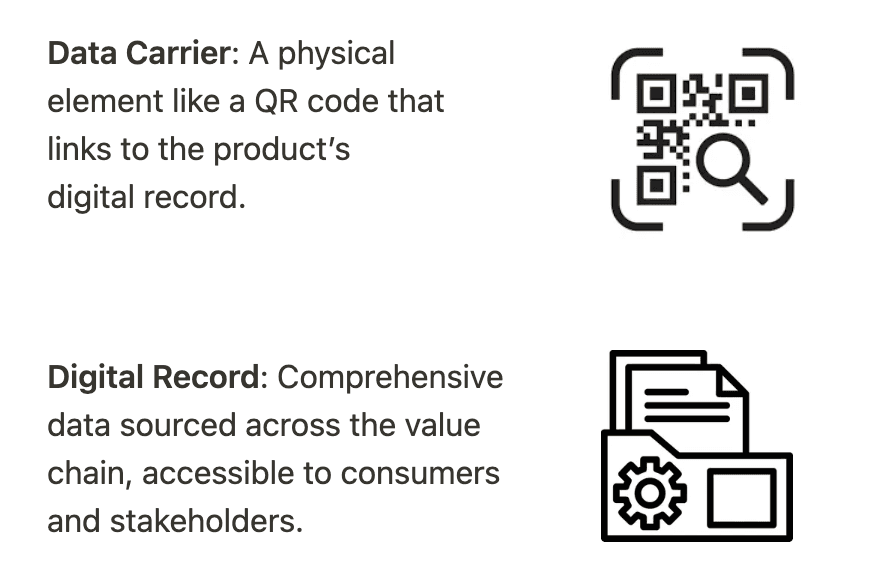Nov 5, 2024
What is the Digital Product Passport?
The Digital Product Passport (DPP) will keep and publish records of nearly all the products sold in the EU. The DPP will hold a comprehensive record of information about a product's lifecycle, made accessible through a unique identifier like a QR code. This makes it easier for consumers to make sustainable choices and for authorities to verify compliance with regulations. It aims to enhance transparency and close the gap between the growing demand for transparency and more reliable data to meet that demand.
With a DPP, the health and beauty industry, which already includes some labeling, will now require more extensive labeling with two components: a data carrier that gives access to a digital record.
Data Carrier: A physical element like a QR code that links to the product’s digital record.
Digital Record: Comprehensive data sourced across the entire value chain, accessible to consumers and stakeholders.

The DPP will be a crucial indicator of cosmetics brands' environmental performance in the EU market and is a significant development in sustainable product management. It is part of the EU's Ecodesign for Sustainable Products Regulation (ESPR), which became a mandate in July 2024. The introduction of the DPP represents a significant shift in business practices, affecting everything from labeling to technology implementation. While specific guidelines are still being developed, the DPP will likely revolutionize how product information is shared and accessed, and for some product categories, this could start as early as mid-2027.
What Could a Digital Product Passport Include?
As a digital record of a product’s key characteristics throughout its life, a DPP could include:

How Can Cosmetic Brands Prepare for DPPs?
The DPP will demand significant data collection and analysis. By embracing DPPs, cosmetics brands can lead the way in transparency and sustainability, meeting the growing demands of not just regulation (like ESPR) but increasingly conscious consumers. Here are key steps cosmetics brands can take to prepare:
Stay Informed: Follow EU regulatory updates and participate in relevant workshops. Fairglow is currently tracking new regulatory developments, so stay tuned with us!
Start Tracking: Use tools like Fairglow to gather and analyze data on your product’s environmental footprint. This ensures you can meet reporting requirements and create detailed sustainability reports.
Be Proactive: Once you’ve established a comprehensive and accurate record, take actionable steps to reduce your environmental impact to stay ahead of the regulatory curve.

A Gamechanger for Transparency
The industry-specific rollout of DPP will occur between 2026 and 2030, making it essential for cosmetics brands to start preparing now. Fairglow is here to help you stay ahead of regulatory changes, enhance your sustainability credentials, optimize your supply chain, gain transparency, and appeal to conscious consumers through detailed, customisable environmental footprinting. Complying with a shifting regulatory environment and meeting your sustainable goals has only gotten more accessible thanks to our AI software based on the most cutting-edge developments in environmental impact reporting. Connect with our team today to learn how Fairglow can support your DPP needs and help you achieve your sustainability goals.




